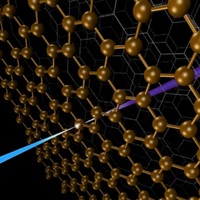Advertisement
Grab your lab coat. Let's get started
Welcome!
Welcome!
Create an account below to get 6 C&EN articles per month, receive newsletters and more - all free.
It seems this is your first time logging in online. Please enter the following information to continue.
As an ACS member you automatically get access to this site. All we need is few more details to create your reading experience.
Not you? Sign in with a different account.
Not you? Sign in with a different account.
ERROR 1
ERROR 1
ERROR 2
ERROR 2
ERROR 2
ERROR 2
ERROR 2
Password and Confirm password must match.
If you have an ACS member number, please enter it here so we can link this account to your membership. (optional)
ERROR 2
ACS values your privacy. By submitting your information, you are gaining access to C&EN and subscribing to our weekly newsletter. We use the information you provide to make your reading experience better, and we will never sell your data to third party members.
Analytical Chemistry
EELS Finds Atoms
Electron energy loss spectroscopy pinpoints single-atom impurities in solids
by Mitch Jacoby
July 6, 2009
| A version of this story appeared in
Volume 87, Issue 27

Researchers in Japan have pushed to the single-atom limit the sensitivity of the chemical spectroscopy method called electron energy loss spectroscopy (EELS). The advance in EELS’s analytical resolving power provides scientists the ability to pinpoint in solids the locations of lone atoms such as impurities and identify them chemically (Nat. Chem., DOI: 10.1038/nchem.282).

In an EELS experiment, researchers irradiate a solid specimen with an electron beam and measure the element-specific decrease in beam energy (the energy loss) caused by interactions between the beam and sample atoms. Commonly used in conjunction with transmission electron microscopy (TEM), EELS can often reveal the chemical identity of atoms in the nanometer-sized area probed by the TEM beam.
A standard way to boost the spatial resolution of both methods is to increase the beam energy (up to about 400 keV), which narrows the electron beam toward atomic dimensions. But therein lies a trade-off: Raising the acceleration voltage focuses the beam but typically destroys sample structures. Lowering the beam energy spares the specimen but destroys the focus. Both problems dash chances for single-atom analysis.
To sidestep those problems, Kazu Suenaga and Yuta Sato of the National Institute of Advanced Industrial Science & Technology, Tsukuba, and coworkers modified their microscope with special electron focusers known as aberration correctors and then tuned the TEM beam energy to just 60 keV, an uncommonly low magnitude. With that setup, the group probed carbon nanotubes loaded with a few fullerene cage molecules that had each been doped with one atom of a foreign element such as calcium or cerium. The team reports that the method revealed the identity and positions of the individual foreign atoms within the nanotubes and differentiated between Ce3+ and Ce4+.
“This is an important advance for imaging the chemical state of dopant atoms in fullerene and other carbon materials such as graphene,” says David A. Muller, a professor and TEM-EELS expert at Cornell University. As beam correctors improve and even lower beam voltages are used, he adds, it may be possible to extend this approach to more weakly bonded molecular crystals.




Join the conversation
Contact the reporter
Submit a Letter to the Editor for publication
Engage with us on Twitter